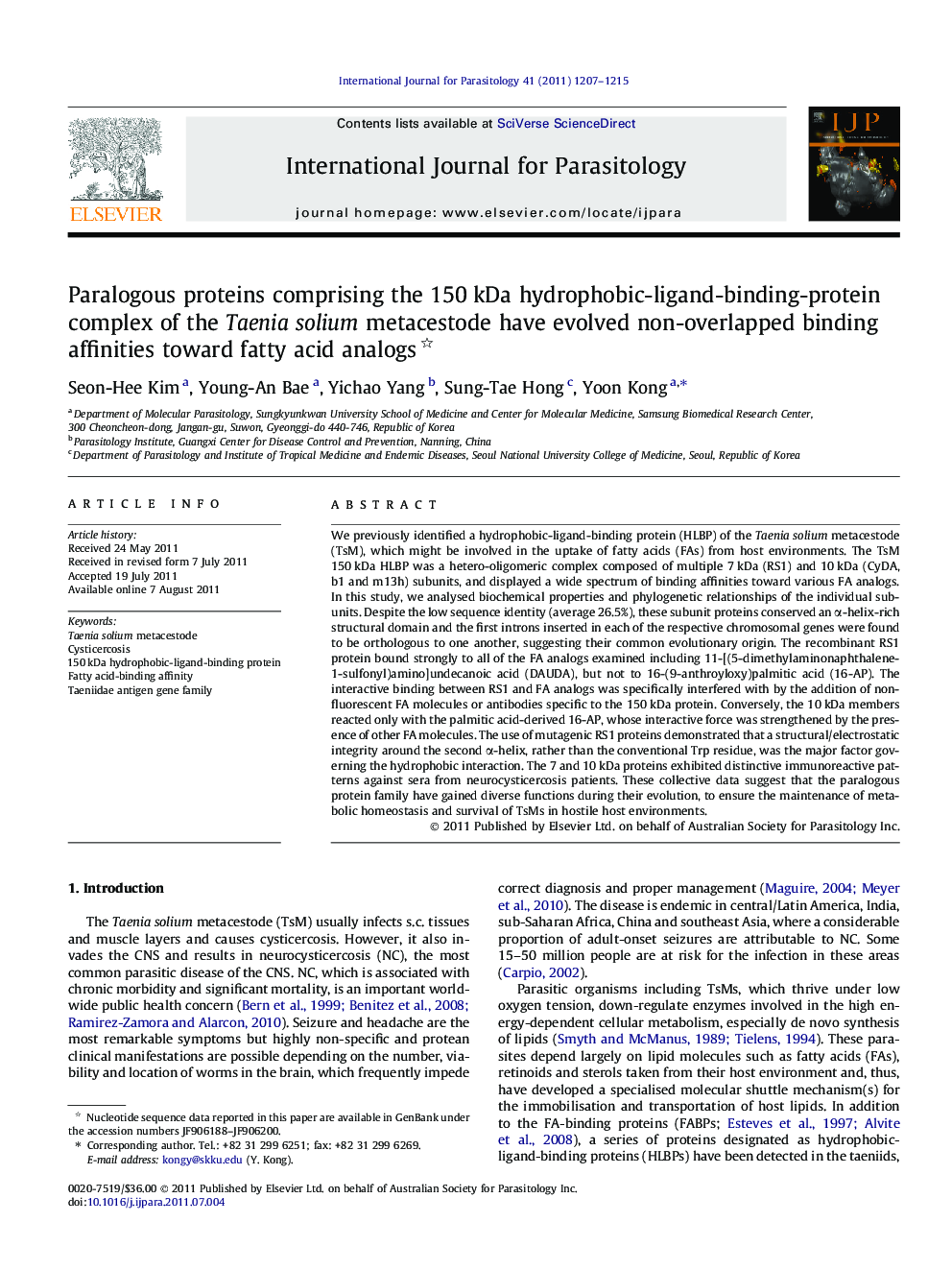| کد مقاله | کد نشریه | سال انتشار | مقاله انگلیسی | نسخه تمام متن |
|---|---|---|---|---|
| 2436194 | 1107287 | 2011 | 9 صفحه PDF | دانلود رایگان |

We previously identified a hydrophobic-ligand-binding protein (HLBP) of the Taenia solium metacestode (TsM), which might be involved in the uptake of fatty acids (FAs) from host environments. The TsM 150 kDa HLBP was a hetero-oligomeric complex composed of multiple 7 kDa (RS1) and 10 kDa (CyDA, b1 and m13h) subunits, and displayed a wide spectrum of binding affinities toward various FA analogs. In this study, we analysed biochemical properties and phylogenetic relationships of the individual subunits. Despite the low sequence identity (average 26.5%), these subunit proteins conserved an α-helix-rich structural domain and the first introns inserted in each of the respective chromosomal genes were found to be orthologous to one another, suggesting their common evolutionary origin. The recombinant RS1 protein bound strongly to all of the FA analogs examined including 11-[(5-dimethylaminonaphthalene-1-sulfonyl)amino]undecanoic acid (DAUDA), but not to 16-(9-anthroyloxy)palmitic acid (16-AP). The interactive binding between RS1 and FA analogs was specifically interfered with by the addition of non-fluorescent FA molecules or antibodies specific to the 150 kDa protein. Conversely, the 10 kDa members reacted only with the palmitic acid-derived 16-AP, whose interactive force was strengthened by the presence of other FA molecules. The use of mutagenic RS1 proteins demonstrated that a structural/electrostatic integrity around the second α-helix, rather than the conventional Trp residue, was the major factor governing the hydrophobic interaction. The 7 and 10 kDa proteins exhibited distinctive immunoreactive patterns against sera from neurocysticercosis patients. These collective data suggest that the paralogous protein family have gained diverse functions during their evolution, to ensure the maintenance of metabolic homeostasis and survival of TsMs in hostile host environments.
Figure optionsDownload high-quality image (151 K)Download as PowerPoint slideHighlights
► The 7 and 10 kDa subunits of the 150 kDa protein in Taenia solium metacestodes comprise a paralogous gene family.
► The recombinant 150 kDa subunits exhibited non-overlapped binding affinities toward diverse fluorescent fatty acid analogs.
► Only the hydrophobic-binding activity of 7 kDa protein was inhibited by the competing fatty acids and specific antibody.
► The physicochemical structure around the second α-helix was critical for the fatty acid-binding activity of 7 kDa protein.
► The major immunoreactivity of 150 kDa protein against cysticercosis patients’ sera was attributable to the 10 kDa proteins.
Journal: International Journal for Parasitology - Volume 41, Issue 11, September 2011, Pages 1207–1215